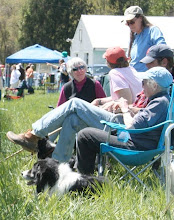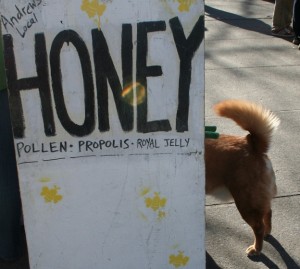 The Hanging Hills form a scenic backdrop used on a recent photo shoot for Moo Dog Knits (and a featured new custom made cabled wool sweater.) The time on the spine of the mountain reminded me of what geological treasures (and human history) are contained in the greater Connecticut River Valley.
The Hanging Hills form a scenic backdrop used on a recent photo shoot for Moo Dog Knits (and a featured new custom made cabled wool sweater.) The time on the spine of the mountain reminded me of what geological treasures (and human history) are contained in the greater Connecticut River Valley.Commuters and travelers on busy Interstate 691 in central Connecticut may notice a castle high on the rocky crag of the Hanging Hills of Meriden. Castle Craig, a rook-like stone tower, commands attention, though many have no idea how to access the mountain road, nor why the landmark exists.

Walter Hubbard is why. He is the man who gifted some 1,800 acres to create a the buffer of land, water, pathways and woods, long before the age of open space preservation. Today known as Hubbard Park, it is only one of his park legacies.
The Hanging Hills are a traprock mountain ridge and two of the peaks are located within the park, South Mountain and East Peak.

The rock exposures are worth seeing up close, as the veined formations were formed by volcanic activity 200 million years ago during the rifting apart of North America from Eurasia.
Lava flows covered the red sandstone in what would become the valley and the flows cooled and hardened into traprock (also known as basalt). As time passed, all was covered, then shoved and tilted. Time past, erosion uncovered the hardest rock and left the ridge layers that ring the valley today.
The hills remain unblemished by quarries or housing, but there are transmission towers on the west ridge.
A drive up the spine of the mountain to the stone tower offers panoramic views and occasional glimpses of soaring hawks.
Hubbard was born Sept. 23, 1823, in Middletown, Conn., and raised on a farm. At 18, he “secured a position as clerk in a country store where, by his thrift, his energy and his strict attention to his employer’s interests, he was enabled to accumulate enough capital to embark in business for himself.”
And he never looked back. First he opened a small store in Meriden. Then, along with his brother-in-law, Bradley, Hubbard founded the Bradley and Hubbard Manufacturing Company, growing it from clock making to quality lighting and other goods. By 1888, the company employed more than 1,000 workers and had showrooms in New York, Philadelphia, Boston and Chicago.








